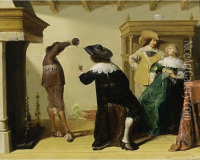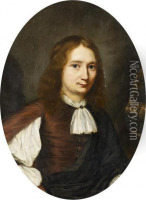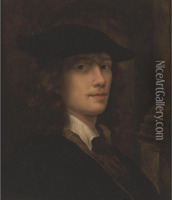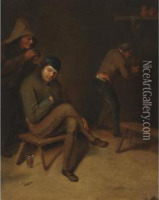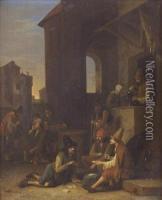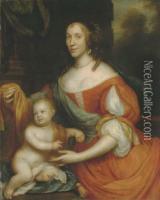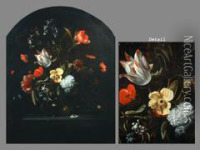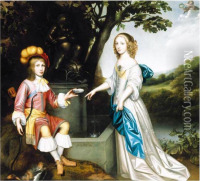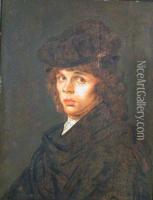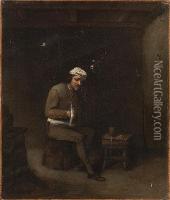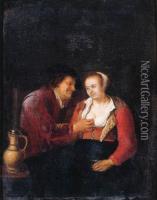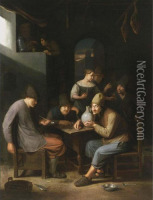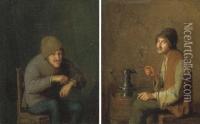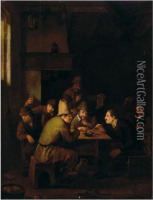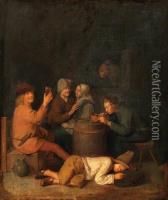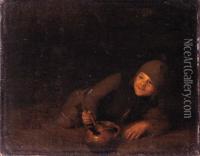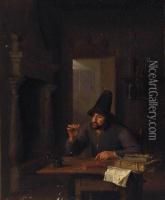Pieter Harmensz Verelst Paintings
Pieter Harmensz Verelst was a Dutch Golden Age painter, born in 1618 in Dordrecht, Netherlands. He is often confused with other members of the Verelst family, who were also painters, such as his son Herman Verelst. Pieter Harmensz Verelst's work primarily consisted of genre scenes, portraits, and floral still lifes, which were popular during the 17th century in the Netherlands.
Verelst's early life is not well-documented, but it is known that he became a member of the Dordrecht Guild of Saint Luke, which was a common professional association for artists of the time. His paintings were characterized by a meticulous attention to detail and a vibrant use of color. He was skilled in creating textures and capturing the interplay of light and shadow, a testament to the influence of the Dutch Golden Age of painting, which emphasized realism and the effects of light.
Although not as famous as some of his contemporaries like Rembrandt or Vermeer, Verelst contributed to the rich tapestry of 17th-century Dutch art. His portraits and genre scenes often depicted the middle class and their domestic environments, providing valuable insights into the culture and society of his time.
Verelst's son, Herman, and his grandchildren, Cornelis and Simon, also became painters, making the Verelst family name well-known in the art world. Herman, in particular, achieved considerable fame in England, where he moved in the latter part of the 17th century.
Pieter Harmensz Verelst's works are less well-known today and are primarily found in private collections and regional museums. He passed away in 1683. Despite the lack of widespread recognition, his paintings remain a part of the enduring legacy of Dutch Golden Age artists, who have had a lasting impact on the history of Western art. His contributions to genre painting and still life continue to be appreciated by art historians and collectors alike.
